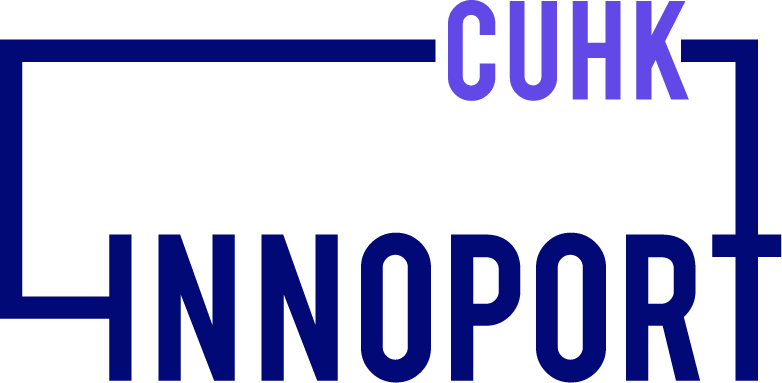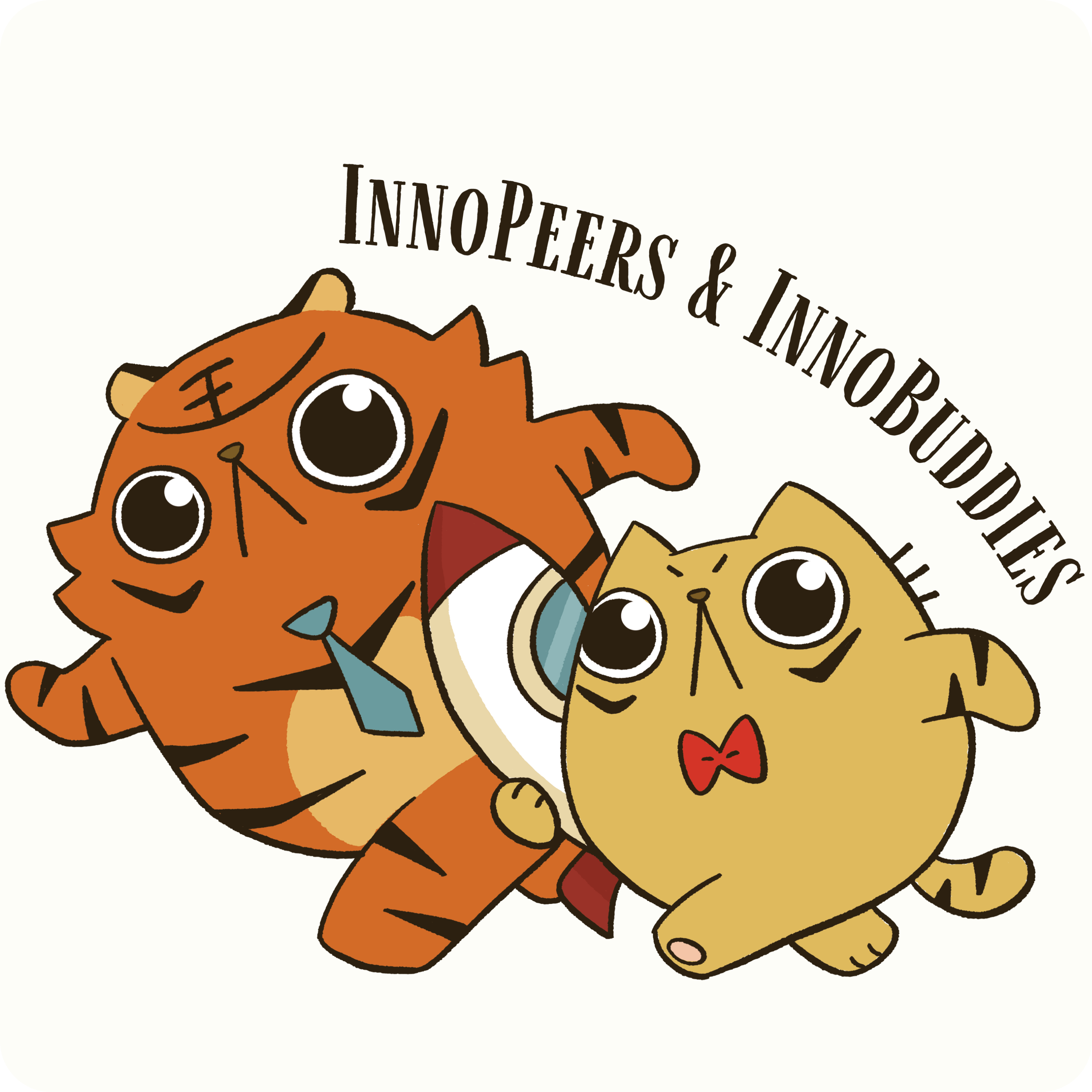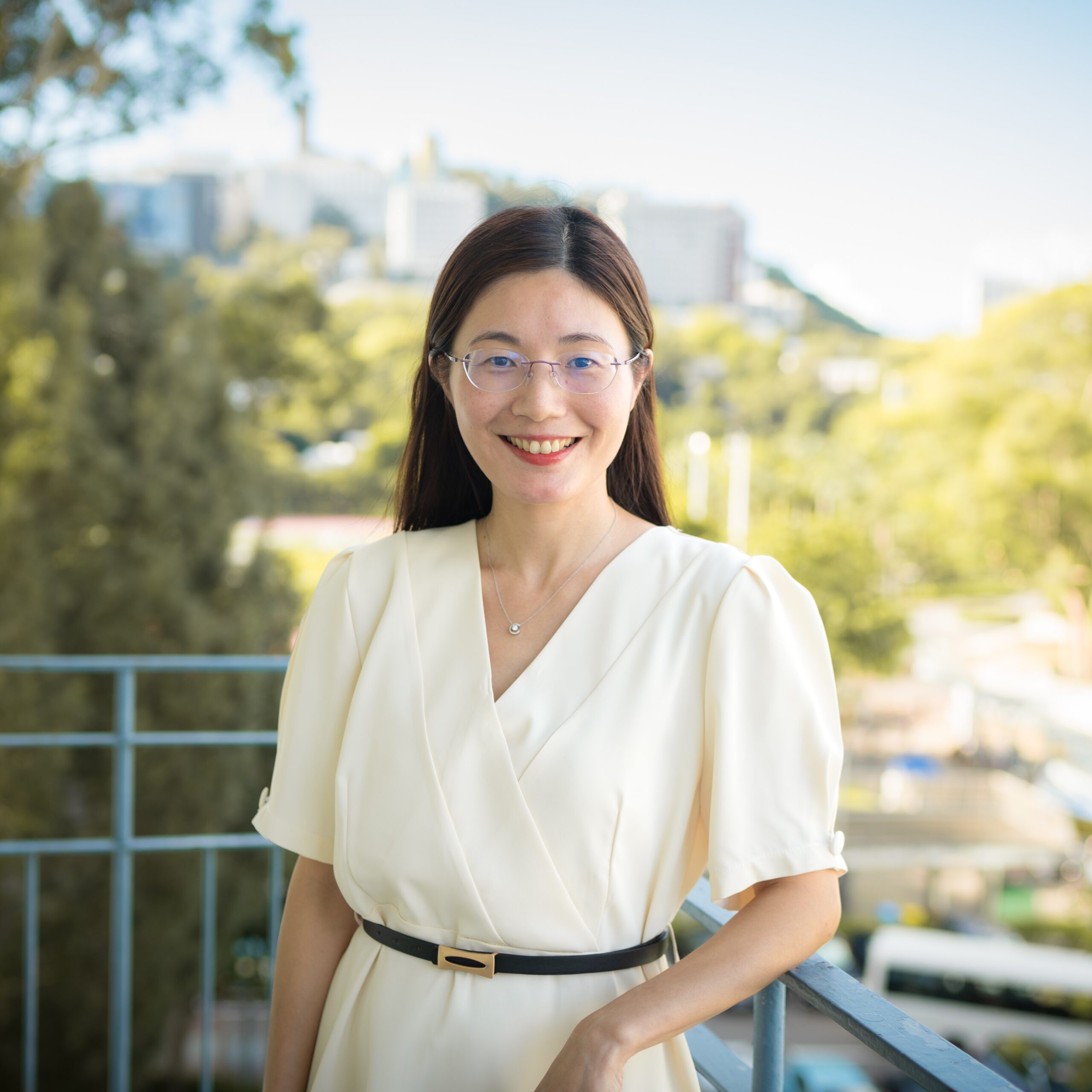The story of Florence Nightingale has inspired generations of nurses. The International Council of Nurses has designated May 12th, her birthday, as International Nurses Day. The theme for International Nurses Day 2024 is “Our Nurses. Our Future. The economic power of care.” This year’s IND Report highlights the economic return on investment of $2 to $4 for every $1 invested in the nursing field. Nurse-led home visit projects have shown to be effective in improving the health and economic independence of vulnerable groups, addressing health disparities, and achieving long-term benefits in poverty alleviation.
Love lasts at The Chinese University of Hong Kong (CUHK). Over the past thirty years, the Nethersole School of Nursing pioneered in Hong Kong has nurtured generations of dedicated nurses, constantly striving for excellence and enriching the provision of nursing services through innovation. In this issue of Cubic Zine, we focus on Professor Suzanne Lo, Associate Professor of the Nethersole School of Nursing, Faculty of Medicine, CUHK, and the social enterprise “Hayley Hand Care Company Limited” and the “Caring Hand Spa” project founded by her. With grace and a slender figure, she carries her luggage and rehabilitation tools, braving the scorching summer heat to visit stroke survivors. In pursuit of her entrepreneurial dream, even as a mother of two young children, she perseveres and manages the “impossible trinity” of running a social enterprise, conducting research and teaching, and taking care of her family. Let us delve into Suzanne’s entrepreneurial dream and learn how her social enterprise and project provide hand care services to stroke survivors, bringing warmth to their arduous journey of rehabilitation.
One Heart, One Pair of Hands, and One Entrepreneurial Dream
“Although I have a nursing background, I also have an entrepreneurial dream. I really want to have my own company where I can inject my ideas and have the flexibility to handle its operations, providing services to society while ensuring sustainable business.”
Suzanne, who comes from an ordinary family, has aspired to become a nurse since she was young. She shares, “When I was a child, everyone would write aspirations like becoming a teacher or a nurse. I always wrote, ‘I want to become a nurse.’ In primary school, I heard the story of Florence Nightingale and thought she was truly remarkable in how she could help so many people. Later, in high school, when I visited a university and saw nursing students demonstrating injections, it sparked my interest. So, I kept this aspiration in my heart. When it came time to choose my university major, I selected the Bachelor of Nursing at CUHK. I later completed a Master of Science in Clinical Gerontology and returned to work at CUHK. I then had the opportunity to pursue a Ph.D. at Queensland University of Technology in Australia.”
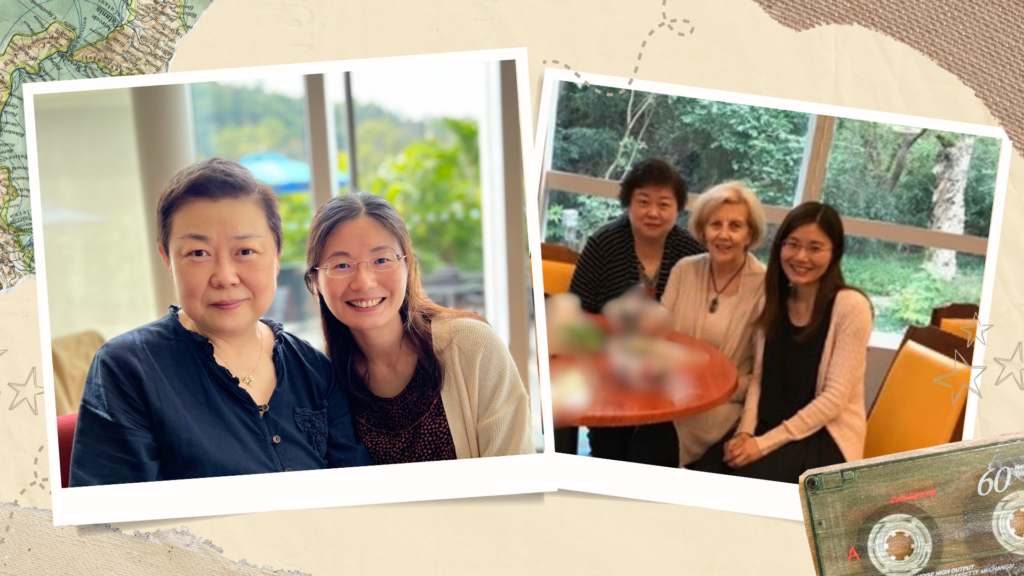
Right Image: A photo of Suzanne, Professor Janita CHAU and Professor Anne CHANG(Provided by interviewee)
During her time at CUHK, Suzanne was fortunate to receive careful guidance and inspiration from her mentor, Professor Janita CHAU. Under Professor CHAU’s subtle influence, Suzanne deeply understood the calling of a nurse and learned the scholarly mindset, as well as how to integrate nursing concepts into research projects to continuously enhance the quality of nursing care services. She said, “These were things I had never considered before. Previously, I simply completed my studies, obtained my nursing license, and naturally looked for a job. But Professor CHAU made me realize that nurses can have diverse development and make contributions to society. Over the years, Professor CHAU has provided me with valuable insights and support for my research projects as well as the establishment of ‘Caring Hand Spa ’, both in terms of conceptualization and practical implementation.”
“Professor Anne CHANG is another scholar who has influenced me a lot. Professor CHANG and Professor CHAU were my Ph.D. supervisors. Every time we were discussing the research directions, I was deeply inspired by their meticulous and comprehensive suggestions. We sometimes discussed the advancement of the nursing profession or managing people and affairs etc. Even now, I can still remember many moments of our discussions like it was yesterday.”
Seeing physiotherapists, occupational therapists, and physicians around her running clinics with their professional abilities, Suzanne’s entrepreneurial dream began to take shape.
She said, “Why not? I believe nurses can also have their own opportunities!”
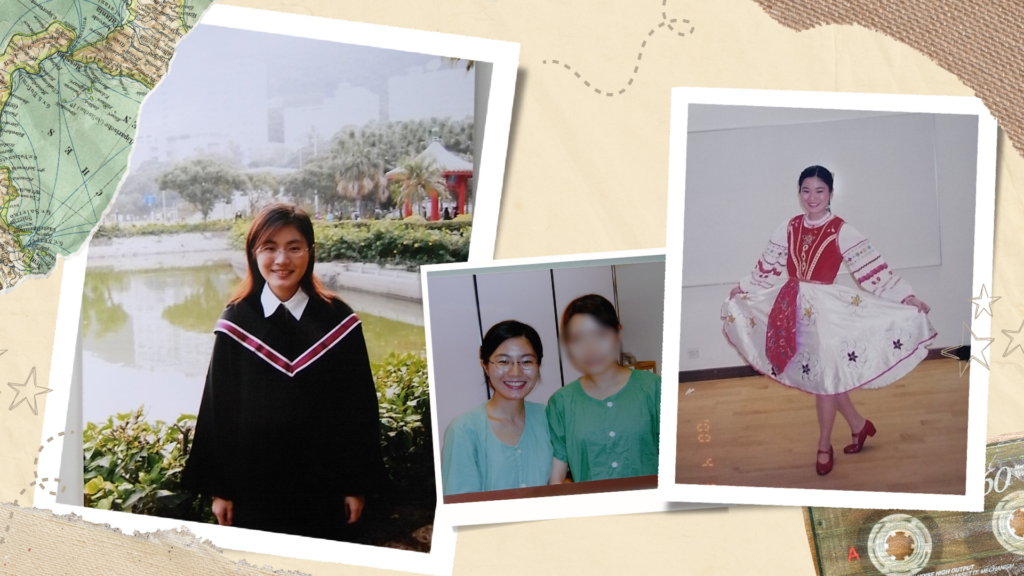
“I Want to Look Beautiful Too”
CUHK has nurtured numerous talents in innovation and technology, developing products such as nanorobots, robotic hands, and “phonographs” that assist in the treatment, rehabilitation, and speech therapy for stroke survivors. However, in the field of hand care, Suzanne and her team were true pioneers. She explained, “Many stroke survivors experience spasticity after a stroke, where the muscles become overly active, resulting in tightness, stiffness, or pain. Common hand spasticity patterns include elbow flexion, wrist flexion, and tightness in the fingers, which affect self-care and daily activities. Hand hygiene can also become problematic, such as the inability to trim fingernails or wash hands properly, and to persistent moisture in the hands. This not only affects hand hygiene but can also result in nails with black edges for a long time, odor, or infections. Family members or caregivers are often busy with daily responsibilities and may not be able to attend to every need promptly. Stroke survivors may also feel uncomfortable and have a diminished sense of self, which can ultimately decrease their confidence and social interactions. Therefore, small hand-related issues can give rise to many other problems.”
Choosing the “blue ocean” of hand care, Suzanne gained inspiration from home visits to stroke survivors, further refining her services. “During a home visit to a middle-aged woman, I saw that she had only painted the nail of her little finger on the affected side with red nail polish. I asked her why she didn’t paint the other fingers as well, and she said that she always enjoyed looking beautiful. Unfortunately, after her stroke, her hand was no longer as nimble, but she still wanted to paint her nails. Even if it was just one finger, she felt she had the right to adorn herself, to make herself happy and feel content.” The rehabilitation experiences and desires of stroke survivors deeply resonated with Suzanne. “In addition to physical recovery, they also have a need for little joys in life: some want to tie shoelaces and wear sneakers again, some want to light incense independently and pray, some hope to sit at the table with their family and pick up food for their loved ones. Hand care, emotional relief, comfort and aesthetics are equally important, but their significance is often overlooked.”
Observing the subtle traits, Suzanne became aware of the true meaning of care in nursing, leading her to further refine the scope of hand care, including hand hygiene, massage, spa, and upper limb rehabilitation support, enabling stroke survivors to live with more dignity. “We have investigated practices from other regions and found a lot of information on how to massage and care for the hands of stroke survivors, explained through short videos. To say whether there is a social enterprise that provides long-term services for individuals with hand spasticity, combining professional care, rehabilitation, emotional relief, and the pursuit of beauty, I believe we will be at the forefront.”
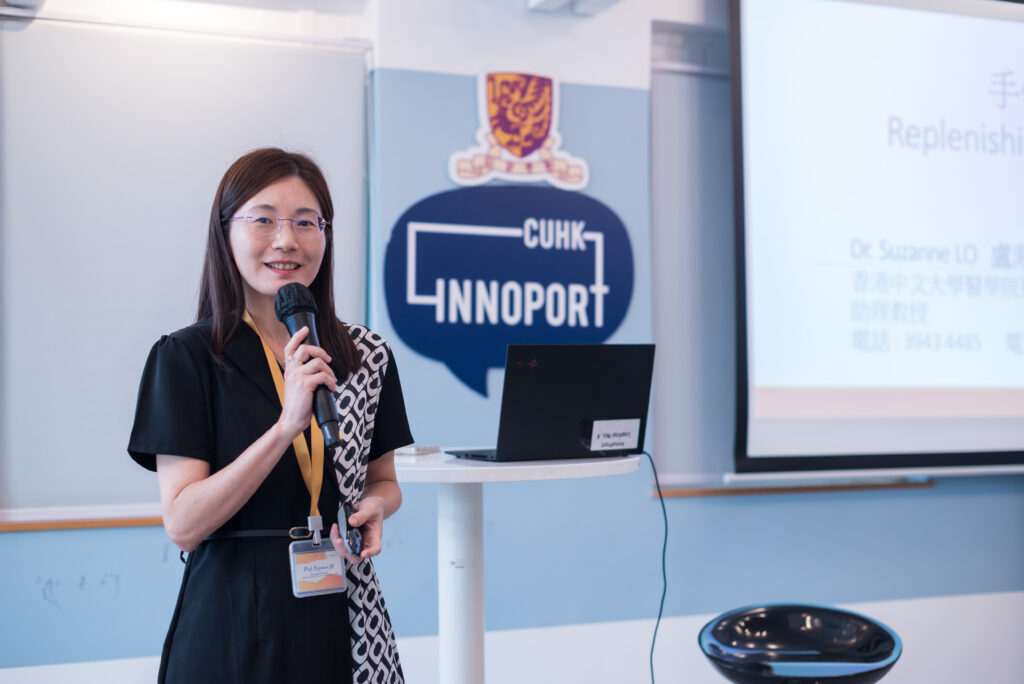
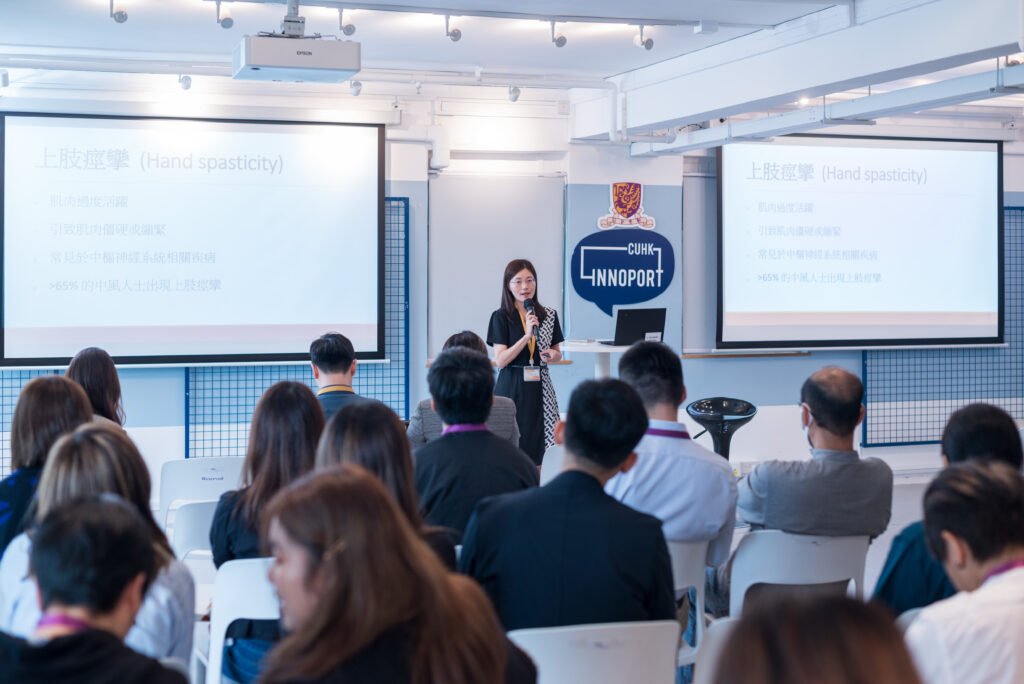
Suzanne also actively strategizes for the home rehabilitation of her service users. Her extraordinary ability to transform everyday items stems from her own habits: “I didn’t come from a wealthy family, so I couldn’t afford to buy many things. Since I was young, I enjoyed organizing and transforming household items. Despite being tired, I really enjoy home visits, especially in the summer. It allows me to observe the stroke survivors’ homes, such as furniture arrangements and space utilization. On one hand, this helps me understand their daily habits so that I can set more appropriate rehabilitation goals and plans for them.
On the other hand, when necessary, I can discuss modifying existing items with them to achieve rehabilitation effects.” One of her creative accomplishments is a table tennis paddle with four wheels attached. Stroke survivors can strap it to their hand using Velcro straps and roll the paddle on a table to exercise their affected upper limb. “The table tennis paddle and straps are already available at home, and the wheels are not expensive. So, this creative solution is practical and useful!” Suzanne takes pride in her resourcefulness and frugality. “For low-income families, these small creative ideas are cost-effective choices. At the same time, it allows stroke survivors to be more involved in their own rehabilitation process and help themselves.”
Knowledge Transfer Transforms Destiny in Hands
Suzanne is deeply passionate about the concept of social entrepreneurship, which combines business endeavors with knowledge transfer to achieve certain social goals and impact. The social enterprise created by her team is called “Hayley Hand Care Company Limited,” and its aim is to provide professional hand care for individuals with hand spasticity after stroke. This is accompanied by personalized hand care, massage, spa and upper limb rehabilitation training support. The social enterprise also involves the participation of golden agers, providing them with employment opportunities and allowing them to contribute to society. Through this initiative, more people become aware of the specific health needs of individuals with hand spasticity, promoting social inclusion.
When discussing the establishment of the social enterprise, Suzanne expresses her deep appreciation for the comprehensive support provided by the Office of Research and Knowledge Transfer Services (ORKTS). In this year’s funding application, her team successfully received support from both the Knowledge Transfer Project Fund (KPF) and the Sustainable Knowledge Transfer Project Fund (S-KPF). She jokingly remarks, “As the saying goes, having a child makes you forgetful for three years. After giving birth, it is crucial to document everything clearly, or else it’s easy to forget!” As a first-time entrepreneur, she has faced numerous challenges: encountering obstacles in seeking collaborations, keeping up with rapidly advancing technologies, meeting tight report deadlines, training ever-changing research assistants, and balancing work with family responsibilities. She often feels physically and mentally exhausted. However, she genuinely loves the service concept of the social enterprise and has no regrets about embarking on the entrepreneurial path. She has learned to confront various challenges from scratch: registering a company for the first time, opening bank accounts for the company, understanding the differences between “limited by shares” and “limited by guarantee.”
“In the initial stages, I relied on our basic knowledge to guide us. But that wasn’t enough; I still needed a framework to provide guidance. The ORKTS matched me with consultants who taught me how to leverage resources and networks to expand our scope of collaboration. This broadened my horizons and gradually guided me towards establishing a social enterprise. When someone tells me how to do something, I then explore it on my own, which helps me progress more smoothly.”
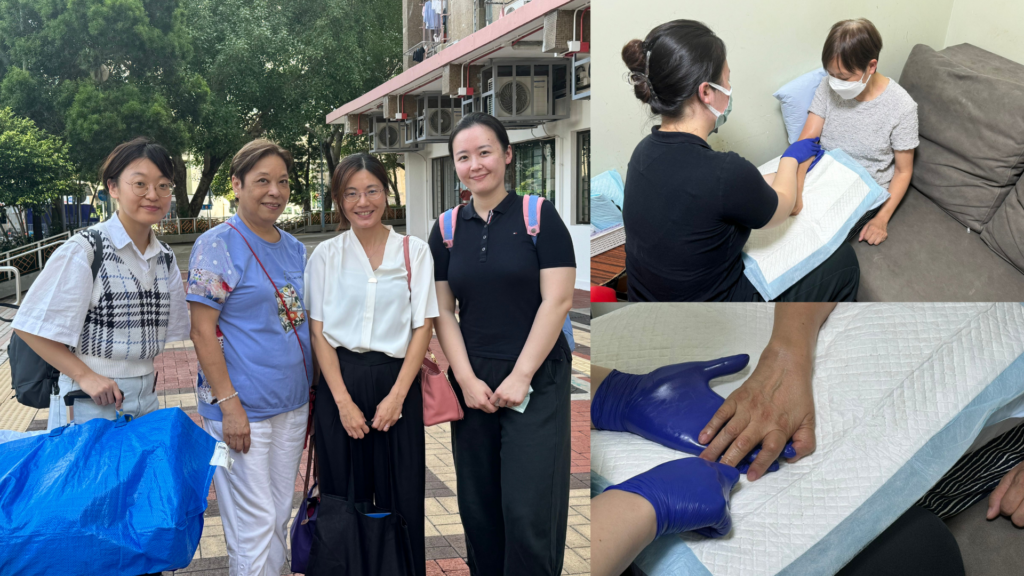
Rediscovering the Initial Aspiration from the Entrepreneurial Journey
Establishing a social enterprise has been a challenging journey for Suzanne, pushing her out of her comfort zone and forcing her to confront her desire for security. “I would describe it as a nerve-wracking experience. There are many things that scared me, but I still push myself to explore seemingly difficult areas. On the one hand, many of the challenges have to be overcome by myself in the end. On the other hand, I feel that the more I understand, the stronger I become, the less fearful I am, and the more at peace my heart feels.”
“I used to feel that every day at work was about submitting reports and dealing with different challenges, and over time, I lost sight of why I was doing it all. I remember one day when a research assistant excitedly told me, ‘Our survey box is finally full! I’m so happy! It feels like a success!’ In contrast, all I felt was worry: ‘Oh no, we only have one box full, and we still need to fill two more!’ But for some reason, after hearing that, I thought back to myself when I was just starting out many years ago. Suddenly, my life was filled with hope. Reflecting on my original purpose for doing research or why I constantly sought funding, it was because I genuinely wanted to help address some of the issues in society. The things I do now may be small, but it doesn’t matter. While great individuals accomplish significant feats, ordinary people create small actions that can also lead to impacts and changes.”
Igniting Sparks with Golden Agers, Fanning the Flames Together
“Hayley Hand Care Company Limited” focuses on effective resource utilization and aims to recruit a group of female golden agers who can not only contribute their personal value but also create positive social impact. Golden agers often have more spare time and can dedicate themselves to service. The team will provide them with training in hand acupressure, massage, cleanliness, and home-based upper limb rehabilitation techniques to cultivate them as the main force. Additionally, golden agers possess strong communication skills, allowing them to engage in conversations with the service users and understand their living conditions and health needs. “Golden agers have these advantages, and sometimes they even use their knowledge and insights to spark connections with the service users.”
Starting with golden agers, Suzanne hopes that individuals from all walks of life will gradually participate in the services and volunteer services, such as student groups. “This idea originated from a social inclusion workshop we organized for high school students. We saw that most students were kind, mature, and willing to get to know individuals with different health needs in society. We can bring students into the outside world based on the requirements of the current secondary school curriculum regarding Other Learning Experiences. We hope that our social enterprise can convey a message: everyone has different abilities, backgrounds, and health needs, and we should advocate for unity in diversity. Therefore, we also hope that students can understand the needs of others and learn how to care for them.”
In practical implementation, student groups can learn basic hand care techniques, including nail care and massage, so that they can shine in their volunteer services and provide appropriate care for their own older family members.
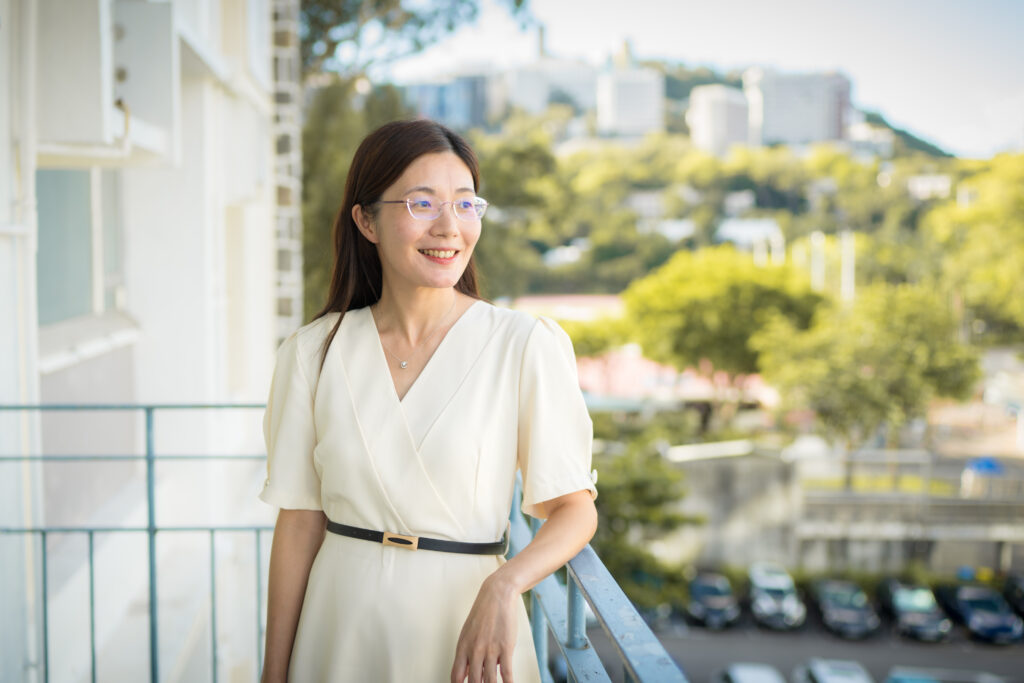
When We Are Old
You may also be curious about the expectations of a nurse-cum-entrepreneur dedicated to serving the older adults when she becomes a senior herself.
Suzanne is delighted to see the increasing diversity and richness of services and facilities provided for the older adults: “In the past, I often participated in volunteer services, helping clean other people’s homes. Sometimes I would think, if I reach that age and a group of young people come to help me clean, I would be very happy. They would greet me, chat with me, and I would feel very fulfilled. At the same time, I think it’s a great thing to participate in volunteer work after retirement. Of course, I also hope to recruit my friends to join, and by then we can participate in service together.”
In 2024, the Nethersole School of Nursing has emerged as the top nursing school in Asia and eighth globally in the QS World University Rankings for Nursing. Breaking into the top ten globally is no easy feat, thanks to the professional heritage and breakthrough innovations of generations of nurses in the school. In today’s society, increasingly diverse and refined nursing services provide greater comfort for people with different health needs.
On this day, 114 years ago, Florence Nightingale left us. If she were still alive today, she would surely be pleased with the innovative progress in the nursing profession. Today, strolling on Nightingale Road outside the Queen Elizabeth Hospital, we can see that the interior is brightly lit, and there is no need for lamps when making night rounds. Nurses can be decision-makers and even start their own ventures from scratch.
Edit by: CUHK ORKTS and Huang Xiangkun (Calvin) – CUHK students (Global Studies), Inno-Ambassador
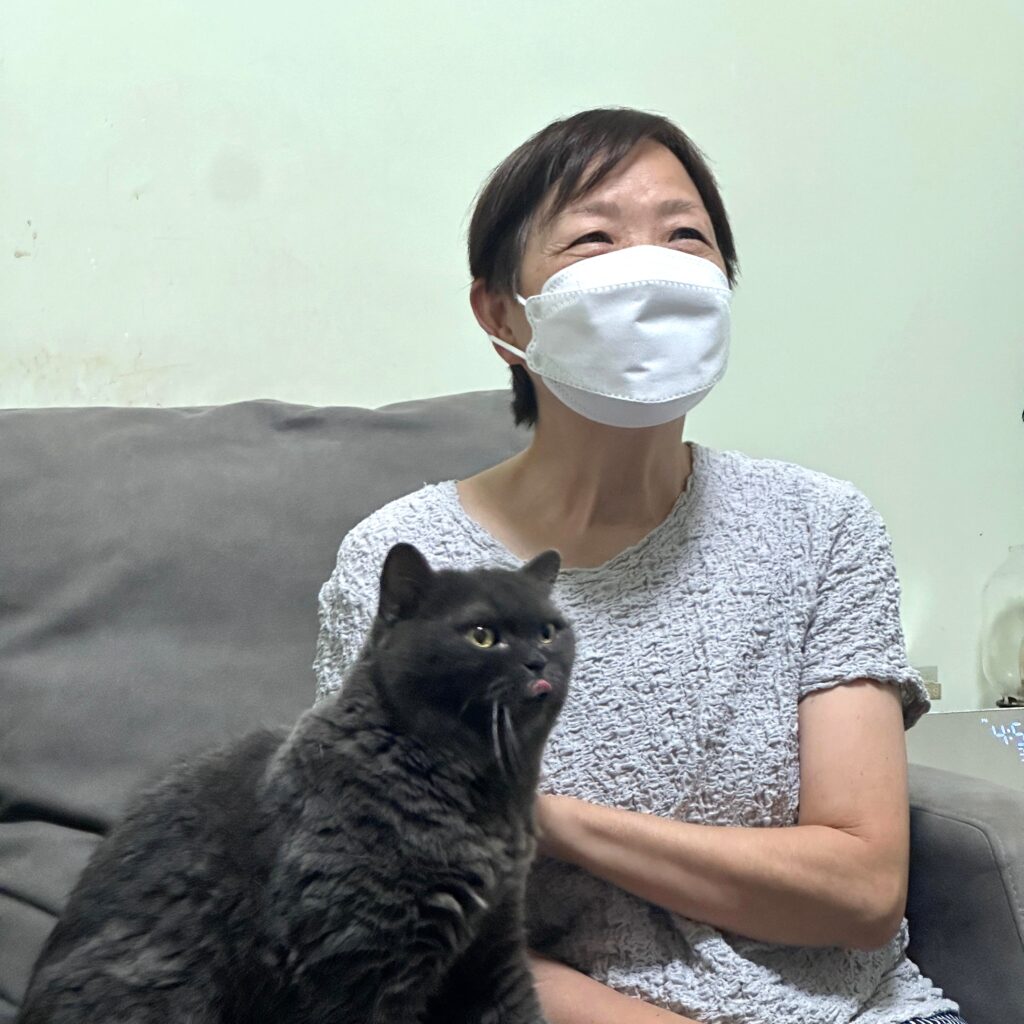
Peer Support in stroke recovery, Golden-ager Lisa and Moon talk about their wishes
The day of the home visit was a “Great Heat Day” (one of the 24 Solar Terms in Chinese Calendar). Suzanne and her co-workers went to Sha Kok Estate in Sha Tin to visit Ms. Yu Yuek-kuen (Moon), a stroke rehabilitation patient. After dragging their luggage filled with service supplies, they were still chatting and laughing, and together with our interview team of seven, we silently stepped into Moon’s warm little home.
Read More→
Intern Dairy / Natalis explores Social Innovation
Natalis Leung, a 15-year-old secondary school student, attended a university seminar and participated in a professor’s visit for the first time. How did he feel?
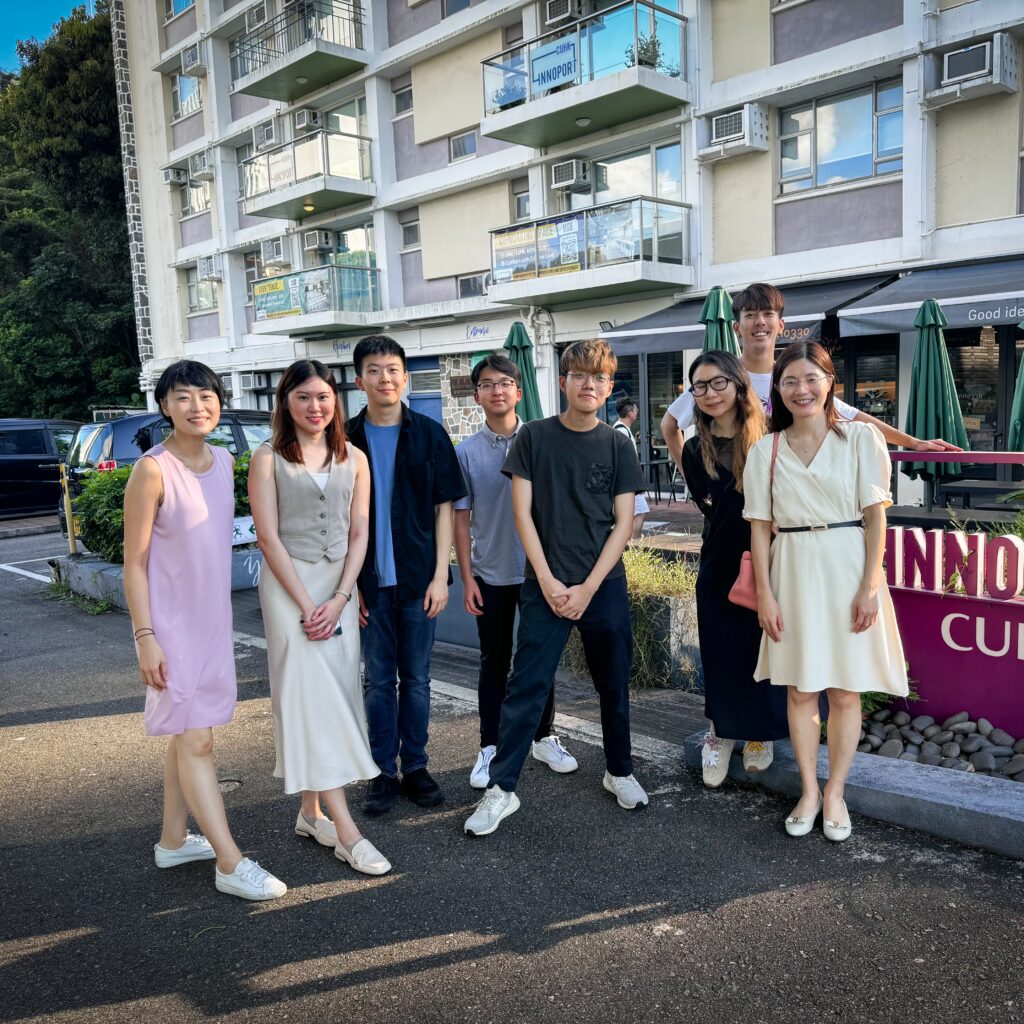
Stroke Statistics in Hong Kong
- Stroke, known medically as “cerebral vascular disease,” is the second leading cause of death globally, the fourth fatal disease in Hong Kong, with an increasing incidence among younger individuals. The threat of stroke is chilling.
- In Hong Kong, an average of nearly three thousand people die of stroke each year; in 2023, 40.4 out of every 100,000 deceased individuals died due to stroke.
- The number of young stroke patients admitted to hospitals under the Hospital Authority due to stroke increased from 1,531 individuals in 2001 to 2,028 individuals in 2021.
- Stroke survivors have always been a significant group in society that cannot be ignored.
- Studies indicate that the attitude and support of family members or caregivers, along with appropriate rehabilitation therapy, play a crucial role in the recovery after a stroke. Approximately 30% of stroke survivors in Hong Kong suffer from moderate-severe depression, highlighting the undeniable impact of stroke on individuals’ psychological and social lives. Stroke survivors not only aspire to physical recovery but also aim to gradually restore their quality of life, from regaining control of their fingers to small tasks like cleaning their nails.
- Suzanne’s social enterprise and project will fill the gap in the rehabilitation industry, providing unique hand care services to offer stroke survivors more detailed care and emotional support.

